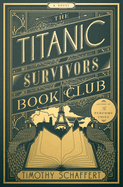
| Publisher: | Doubleday | |
| Genre: | General, Romance, Literary, LGBTQ+ - Gay, Fiction, Historical, LGBTQ+ | |
| ISBN: | 9780385549158 | |
| Pub Date: | April 2024 | |
| Price: | $29 |
| Starred | Fiction |
by Timothy Schaffert
Serendipity can yield unpredictable alliances, as is the case with the people who didn't board the Titanic--the central figures of The Titanic Survivors Book Club, Timothy Schaffert's opulent work of historical fiction. A year after the ocean liner sank, 26-year-old Yorick--his father was a vaudevillian who "fancied himself a Shakespearean actor"--is the owner of a Paris bookshop purchased with an inheritance. One morning, he finds outside the shop a bottle that contains an invitation to a saloon, where he meets a dozen others who also had tickets to the voyage. Among the attendees is a toymaker who has brought them together to share their tales. The two participants besides Yorick who figure most prominently are Zinnia, Japanese American daughter of a wealthy confectioner, and Haze, a young man whom Yorick finds attractive. Zinnia suggests they form a book club, an idea the toymaker says will give them an "unsentimental purpose."
Yorick chooses the books for the club, but one he doesn't select is Cyrano de Bergerac. That would have been apt: much to Yorick's frustration, Haze is sweet on Zinnia and asks Yorick to write love letters for him. Schaffert (The Perfume Thief) has fun exploring the contours of the trio's secrets and longings. Some of the writing is over-the-top, but readers who enjoy swoon-worthy fiction won't be disappointed. And the novel has heartfelt passages on the allure of books and the emotional challenges of trying to hold on to the past. In the market for unabashedly romantic literature? Schaffert delivers. --Michael Magras, freelance book reviewer
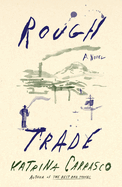
| Publisher: | MCD | |
| Genre: | Crime, General, Literary, Fiction, Historical, LGBTQ+ | |
| ISBN: | 9780374272685 | |
| Pub Date: | April 2024 | |
| Price: | $28 |
| Starred | Fiction |
by Katrina Carrasco
Katrina Carrasco (The Best Bad Things) blends deeply researched historical fiction with riveting queer adventure in Rough Trade, the spectacular second installment of her episodic crime series about the undeniably charming antihero Alma Rosales.
It's the summer of 1888, and Alma's crew is working the Tacoma docks of Washington Territory. Their cover story is that they're stevedores, but smuggling opium is their real trade.
In the months that follow a drug bust on their ship, several new players wander onto Alma's docks and threaten the tidy little business she runs under the protective care of seductive socialite Delphine Beaumond. Among those is Bess Spencer, Alma's former partner at the Pinkerton Women's Bureau of investigators, from a lifetime ago. But the real fuse lights when dead bodies start turning up under suspicious circumstances, and with signs of injection. Alma risks a swarming police presence that could irreversibly upset the life she's only recently built for herself in Washington, after escaping tragedy elsewhere.
Carrasco writes with a brisk pace and cheeky playfulness that offset the rugged terrain and dicey stakes. Alma carries a queer and irresistible swagger as she shapeshifts into her public persona, Jack Camp, the roughest man in town. And her sexual tension with both Bess and Delphine gin up a satisfying heat. So much of the fun in this novel pivots on the divide between public and private presentations, highlighting how simple it becomes to defy the law when one's gender and sexuality are already at odds with it.
Rough Trade is an addictive treat sure to please fans of Sarah Waters and HBO's Our Flag Means Death. --Dave Wheeler, senior editor, Shelf Awareness
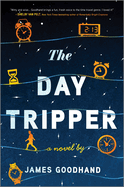
| Publisher: | Mira | |
| Genre: | Literary, Coming of Age, Time Travel, Fiction, Science Fiction | |
| ISBN: | 9780778369646 | |
| Pub Date: | March 2024 | |
| Price: | $28.99 |
| Starred | Fiction |
by James Goodhand
It takes tremendous skill to transform a sci-fi trope into an emotional tear-jerker, which James Goodhand (Last Lesson) does in The Day Tripper. In 1995, 20-year-old Londoner Alex Dean spends his days with his wonderful new girlfriend, drinking and smoking and getting ready to take his place at Cambridge. But when Blake Benfield, a bully from his childhood, confronts him, Alex decides for once to choose fight over flight. Blake completely batters Alex and throws him into the Thames. When Alex wakes up next, it's in unfamiliar surroundings and 15 years in the future. He's jaundiced from alcoholism and living a life at odds with his 1995 plans for the future. Each day from then on, he wakes up in another random day of his future, desperately trying to piece together what happened and whether he can somehow rectify his terrible mistakes. Helped by Dr. Paul Defrates, the only other person who seems to know what he's experiencing, Alex discovers how to deal with the demons of his past and what it really means to be a man worthy of respect and admiration.
Goodhand's stellar development of Alex takes readers deeper and deeper into his psyche as he transforms from a brazen young man whose only vague goal is "to be looked up to." Fully believable supporting characters buoy the narrative. The atemporal plot, posing questions about causality, adds nuance to portrayals of PTSD, alcoholism, grief, and recovery in this reluctant-time-traveler story filled with heart and hope. --Dainy Bernstein, freelance reviewer
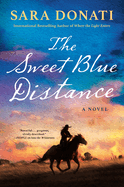
| Publisher: | Berkley | |
| Genre: | Historical - General, General, Romance, Westerns, Fiction, Historical | |
| ISBN: | 9781984805058 | |
| Pub Date: | April 2024 | |
| Price: | $29 |
| Fiction |
by Sara Donati
The Sweet Blue Distance, another immersive historical novel from Sara Donati, explores midwifery, mental illness, racial dynamics, and romance in 1857 New Mexico. Connecting her six-book Wilderness series and her Waverly Place series, Donati's narrative follows nurse-midwife Carrie Ballentyne as she travels across the country from Manhattan to Santa Fe and navigates unfamiliar languages, relationships, and challenges in her new home.
Donati (Where the Light Enters) begins with correspondence and Carrie's travel diary. Carrie, accompanied by her brother, Nathan, sets out to work as nurse-assistant to Dr. Sam Markham and midwife to his wife, Indira. On the train west, they encounter the Ibarra brothers, of mixed Pueblo and Basque descent. Eli, the eldest, will play a pivotal role in Carrie's life. The journey continues via stagecoach and (eventually) on horseback. Carrie's skill, endurance, and doeskin leggings raise eyebrows in equal measure.
Through Carrie's keen, intelligent eyes, Donati draws a richly detailed portrait of the American frontier in the years before the Civil War. Santa Fe is a young, bustling town of diverse (sometimes clashing) racial and religious groups. Carrie must confront tricky social dynamics while learning new languages and habits. Her employers, the Markhams, prove difficult in unexpected ways and, though she makes friends in the community, Carrie must use all her medical skill and emotional resilience to meet the challenges of her new life.
Layered, absorbing, and peopled with complex, fascinating characters, The Sweet Blue Distance is a captivating portrayal of one woman's inner journey set against the vast backdrop of the rapidly changing American West. --Katie Noah Gibson, blogger at Cakes, Tea and Dreams

| Publisher: | Harper Perennial | |
| Genre: | General, Literary, Coming of Age, Suspense, Thrillers, Fiction, LGBTQ+ | |
| ISBN: | 9780063286870 | |
| Pub Date: | March 2024 | |
| Price: | $18.99 |
| Fiction |
by Maggie Thrash
Part murder mystery, part queer romance, and part examination of the three-ring circus of the court system during the Satanic Panic of the 1990s, Rainbow Black is Maggie Thrash's first novel for adults--and it doesn't disappoint. In 1990, 13-year-old Lacey Bond is living with her hippie parents at their day-care center in rural New Hampshire when the police arrest her parents and charge them with "more than thirty counts of child molestation and sexual abuse," many involving aspects of the occult. Lacey and her sister stand up against the allegations and bristle against a world that wants vengeance at any price. When an unspeakable murder occurs, Lacey goes to the edge of her humanity and, years later, discovers the cost of justice.
Darkness permeates Rainbow Black, and Lacey must do whatever it takes to break through the shadows that engulf her. Despite dealing with graphic and intense themes of violence, sexual assault, homophobia, and more, Thrash (Honor Girl) has an astounding ability to carve nuance and depth from her characters. Thrash's prose has a conversational style that keeps the pages flying. Readers will cheer for Lacey despite (or potentially because of) her faults, and her sarcasm prevents the tone from veering into total shadow. The novel's secondary characters provide brilliant insight into its more complex themes of loss and belonging, as when Lacey's mother says, "People should do whatever they can to get love. It's a consuming, horrible need." Those who consider themselves fans of Kevin Wilson or Donna Tartt should put Rainbow Black on their TBR lists. --Dominic Charles Howarth, book manager, Book + Bottle
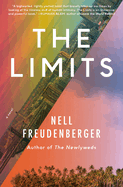
| Publisher: | Knopf | |
| Genre: | Women, General, Literary, Fiction, Historical | |
| ISBN: | 9780593448885 | |
| Pub Date: | April 2024 | |
| Price: | $29 |
| Fiction |
by Nell Freudenberger
Nell Freudenberger's fourth novel, The Limits, is a clear-eyed exploration of loss, love, and the difficulty (and hope) inherent in human connection, set during the first year of the Covid-19 pandemic. Freudenberg (Lost and Wanted) centers her narrative on former spouses Nathalie and Stephen, still bound by their teenage daughter, Pia, and their history together. Marine biologist Nathalie is stationed on Mo'orea, studying the delicate ecosystems of coral reefs. Her cardiologist ex-husband, Stephen, in locked-down Manhattan, must balance his increasingly demanding work with his worry for his newly pregnant wife, Kate. Meanwhile, Pia has returned, under duress, from Mo'orea to New York to live with Stephen. Pia's parents hope that interaction with other young people will help her cope, and Nathalie wants to distance her daughter from a crush on an older man. Freudenberger tells her story from their perspectives, plus those of Kate, a teacher struggling with remote education and the realities of a pandemic pregnancy, and Athyna, one of Kate's brightest students, whose anxiety and familial challenges threaten to derail her hopes for college.
Freudenberger's characters love and fight and despair and act out, dealing with daily frustrations while trying to weather a circumstance none of them ever imagined. She touches on case numbers, racial protests, and political furor, but the novel's heart lies in its characters' sharply drawn inner lives and their relationships with one another, as fragile and finely attuned to their environment as the corals Nathalie studies.
Sensitive, luminous, and sometimes wryly funny, The Limits is a nuanced portrait of the difficult, worthwhile work of connecting with others--even during a global disaster. --Katie Noah Gibson, blogger at Cakes, Tea and Dreams
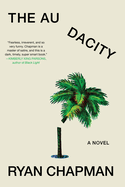
| Publisher: | Soho Press | |
| Genre: | Family Life, Absurdist, Marriage & Divorce, Fiction, Asian American & Pacific Islander | |
| ISBN: | 9781641295628 | |
| Pub Date: | April 2024 | |
| Price: | $27 |
| Fiction |
by Ryan Chapman
If one can't rein in the ultrarich, one can at least satirize them. That's the catharsis Ryan Chapman (Riots I Have Known) offers in The Audacity, his merciless, aptly named sophomore novel. Guy Sarvananthan, an American of Sri Lankan ancestry who lives in New York, spent "decades as a struggling composer" before marrying Victoria Stevens, founder of PrevYou, a firm that claims to be this close to a cancer cure. There's just one problem: the company's a fraud, the claim is fake. Victoria disappears, her kayak ending up in the San Francisco Bay, with no one sure whether she died by suicide or just took off. Guy, sensing ruin, stalls for time by taking Victoria's place at a three-day conclave on a Caribbean island, where yacht-owning types have gathered "to pool our fortunes," as the host says, "and decide which global ill to eradicate once and for all!"
That they eradicate nothing isn't a spoiler alert. The fun of The Audacity is in finding out what happens to these delusional types. Some plot developments aren't exactly subtle, but neither are people like these characters. Chapman's approach befits this can-do crowd, and therein lies the appeal for readers critical of free-market absolutism and its ruthless adherents. Late in the book, Guy realizes that "a functioning American life kept you too busy to register its liabilities" and that Victoria, like other power brokers, "was a pure product of America." That those two statements are absolutely true and related to one another is part of the strength of this ferocious takedown. --Michael Magras, freelance book reviewer

| Publisher: | Viking | |
| Genre: | Women, Literary, Fiction, Sports | |
| ISBN: | 9780593654101 | |
| Pub Date: | March 2024 | |
| Price: | $28 |
| Fiction |
by Rita Bullwinkel
Rita Bullwinkel's debut novel, Headshot, submerges readers in the minds of eight women fighting in the 12th annual 18-and-under Daughters of America Cup. As each bout of the boxing tournament ensues, Bullwinkel's stunningly intimate look at the physical and mental tug-of-war explores the haunting memories, desperate motivations, and life-altering realizations of each fighter. Pushed and pulled about the ring, under the harsh fluorescent lights, they all hope to be named the best in the country.
The narration's detailed observation gives each participant's thoughts a fast-paced, in-the-moment intensity equal to that of the stakes of their boxing matches: "Eight two-minute rounds, with time-outs and pauses between rounds, is barely enough time for anything at all to happen. And yet, it seems like, within each two-minute round, anything could happen." Bullwinkel (Belly Up) moves seamlessly between visceral physicality and vulnerable interiority--"Every time the referees look in [Andi's] gloves it is like they are saying, You are capable of killing.... Most people in her life don't seem to believe she is capable of anything." The women are forced to muster up long-practiced techniques, willpower, and memories to make it through their match and the pivotal moment in their self-discovery.
Tough exteriors are coupled with strikingly tender inner monologues about growing up and finding one's place in the world. Adrenaline-rich moments reveal why these young women are drawn to the sport, whom they want to impress, or who they want to become. While enticingly earnest, Headshot finds moments of humor in the time-outs between deeply introspective moments. An innovative take on women's boxing and coming-of-age, Headshot is a knockout debut. --Clara Newton, freelance reviewer

| Publisher: | Berkley | |
| Genre: | Friendship, Mystery & Detective, Amateur Sleuth, Fiction | |
| ISBN: | 9780593550526 | |
| Pub Date: | April 2024 | |
| Price: | $18 |
| Mystery & Thriller |
by Freya Sampson
Freya Sampson's charming third novel, Nosy Neighbors, focuses on a dilapidated historic building in an English village and its tenants, who band together to stop the building's demolition. Dorothy Darling, age 77, has lived at Shelley House for decades. She spends most of her time observing her neighbors' behavior and reporting them for small infractions. Pink-haired Kat is running from her past and has just moved into the flat of Joseph, a kind tenant at Shelley House. Kat, who's illegally subletting Joseph's second bedroom, tries steering clear of Dorothy, until Joseph is attacked and ends up in the hospital. Kat enlists Dorothy's help in caring for Joseph's dog, Reggie, and before long the two women (and their neighbors) find themselves staging protests, combing newspaper archives for evidence against their sleazy landlord, and trying to figure out who attacked Joseph.
Sampson (The Last Chance Library) alternates between Kat's and Dorothy's perspectives, gradually peeling back the layers of the secrets both women hide. The two, though decades apart in age, are similarly plagued by guilt from past incidents, convinced they don't deserve the support of a community. Gradually, their kind neighbors--including teenage Ayesha, gruff Tomasz, and even Reggie the dog--crack open Kat's and Dorothy's protective shells. Although Sampson's narrative includes some dramatic moments (even a car chase!) and a final confrontation, the novel's heart lies in the quiet acts of everyday compassion and wry, honest exchanges between neighbors.
Touching, entertaining, and deeply compassionate, Nosy Neighbors is a tribute to the power of unexpected community and a portrait of two women who take the risk of healing. --Katie Noah Gibson, blogger at Cakes, Tea and Dreams
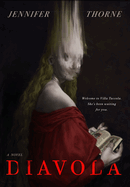
| Publisher: | Tor Nightfire | |
| Genre: | Horror, General, Supernatural, Thrillers, Fiction | |
| ISBN: | 9781250826121 | |
| Pub Date: | March 2024 | |
| Price: | $27.99 |
| Mystery & Thriller |
by Jennifer Thorne
Although novels about terrible rich families have a certain gauche appeal, it can be difficult to emotionally connect with the characters they portray. In Diavola, Jennifer Thorne (The Antiquity Affair; Lute) tackles this challenge by sending one such family to a haunted villa in the Tuscan countryside for their annual vacation, skillfully building an oppressive atmosphere until readers find themselves sympathetic to the plight of the protagonist, Anna, despite her shortcomings. Anna has put off joining the annual Pace family trip, reluctant to subject herself to their particular brand of snide remarks and passive-aggressive criticism that stems from years of family tension and drama. Eventually she gives in to familial obligations, and once she arrives, things begin to go overtly and subtly awry: movement out of the corner of her eye, incessant scratching on the other side of a locked door to a tower in the villa, fresh food spoiling within minutes, and increasingly strange (and frightening) dreams.
The novel's gothic claustrophobia isn't contained to the villa, as Thorne slowly reveals that this isn't just a house haunting: it's a "[n]ameless, formless, paralytic" spirit, malevolent and fixated on Anna. And fleeing back to normal life won't bring her freedom. Thorne plays with time without jumps or signals; the narrative moves linearly until readers suddenly realize that a conversation was happening within another conversation--or maybe not even happening at all, but merely imagined. Days go missing. Memories contradict each other. Thorne pairs the idea of escaping family toxicity with the urgent need to also escape actual danger. Readers with a penchant for both horror and rich people behaving badly will enjoy this quick, sinister novel. --Kristen Coates, editor and freelance reviewer

| Publisher: | Minotaur | |
| Genre: | Mystery & Detective, Traditional, Fiction, Women Sleuths | |
| ISBN: | 9781250863850 | |
| Pub Date: | March 2024 | |
| Price: | $28 |
| Mystery & Thriller |
by Christina Estes
A journalist's thrill of breaking a high-profile news story and the relentless rivalry among media outlets make a formidable backdrop for Off the Air, Christina Estes's spirited debut and the winner of the Tony Hillerman Prize.
Jolene Garcia, a reporter for Phoenix's Channel 4 Eyewitness News, desperately wants to move from general assignments, where she might cover the zoo's baby giraffe or a dust storm, to special projects, such as her well-received segment on the working conditions of park rangers. These projects require more research but garner extra airtime. But her insistence on getting it right, rather than quickly, means she often gets scooped by other reporters while simultaneously running afoul of her station's demand for instantaneous news coverage. Jolene gets the chance to prove her mettle in covering the story of popular, controversial radio host Larry Lemmon's murder. Jolene finds no lack of suspects as she digs into Larry's life, but she also has to handle the increased competition with other media outlets.
Estes affords Jolene and her co-workers an authentic camaraderie, showing that true friendships can grow in times of extreme stress. She shapes Jolene as a dedicated journalist, determined to rise above her humble background, one that includes foster care. As an award-winning journalist herself, Estes also offers an insightful view of the challenges of multimedia journalism. The mystery sometimes gets lost amid the machinations of news gathering in her novel, but Jolene proves an investigative reporter can be a valuable sleuth as she uses her expert knowledge of Phoenix's landscape to her benefit. Off the Air's strong outing is deserving of a sequel. --Oline H. Cogdill, freelance reviewer
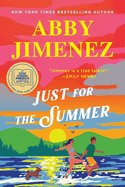
| Publisher: | Forever | |
| Genre: | Women, Romantic Comedy, Humorous, Small Town & Rural, Romance, General, Fiction | |
| ISBN: | 9781538704431 | |
| Pub Date: | April 2024 | |
| Price: | $17.99 |
| Romance |
by Abby Jimenez
Just for the Summer by Abby Jimenez (Yours Truly; Part of Your World; The Happy Ever After Playlist) is a brilliantly bittersweet rom-com. Perfect for fans of Jasmine Guillory or Christina Lauren, Jimenez's novel blends lighthearted summer romance vibes with some deep emotional themes.
Thanks to a Reddit thread, Justin and Emma realize they each have the same curse: they're the person that someone dates right before they meet their forever person. Emma and Justin decide to try to break the curse for at least one of them by starting a relationship with each other, and they plan to have some breezy (and sexy!) Minnesotan summer fun.
But when Justin has to take over guardianship of his three younger siblings and Emma's incredibly toxic mother, Amber, shows up, they both have more to deal with than they expected. Emma thought she was past her childhood in and out of foster care and felt ready to help Justin with his siblings, but Amber's unwelcome appearance forces her to face truths she's suppressed. Justin tries to support Emma while juggling three heartbroken kids and his own loss, which makes it hard to be available for a new love. Is it a case of the right person at the wrong time, or can Emma and Justin finally break their curse for real?
Just for the Summer, both truly sad and exceptionally funny, is an irresistible romance. Fans of Jimenez's previous books are sure to appreciate cameos from other characters, while new readers will vicariously enjoy the lovely Minnesotan summer setting and root for Justin and Emma to find true love at last. --Jessica Howard, freelance book reviewer
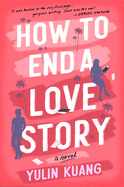
| Publisher: | Avon | |
| Genre: | Women, Romance, Contemporary, Multicultural & Interracial, Fiction, Asian American & Pacific Islander | |
| ISBN: | 9780063310681 | |
| Pub Date: | April 2024 | |
| Price: | $18.99 |
| Romance |
by Yulin Kuang
Screenwriter Yulin Kuang (I Ship It; Dollface) makes her novel debut with How to End a Love Story, a poignant but funny romance about the power of forgiveness.
Bestselling author Helen Zhang heads to Los Angeles to work on the television adaptation of her soapy young adult series, and hopefully conquer her writer's block. When she arrives, she's stunned to find her high-school classmate Grant Shepard is second chair in the writing room--the same Grant who fatally struck her younger sister with his car at the end of their senior year. Grant was the unwilling tool Michelle used to die by suicide, but that hasn't stopped Grant from hating himself. And Helen has held onto anger at her sister and herself.
After overcoming the initial shock, Helen is determined to ignore Grant and to do well in her new role on the writing and production team. They can keep everything strictly professional, right? Thousands of miles from their former homes in New Jersey, Helen and Grant gradually open up and, with the help of a hilarious, motley crew of writers turned friends, are able to create something new and beautiful. The push-pull angst of their romance is skillfully complemented by humor, steam, and glimpses behind-the-scenes of show business.
It will come as no surprise that as the adapting writer of People We Meet on Vacation and writer/director of Beach Read, Kuang offers a heart-wrenching, funny, sexy novel will appeal to fans of Emily Henry and Abby Jimenez. How to End a Love Story is entirely Kuang's own, however, and establishes her as an author--and screenwriter--to watch. --Suzanne Krohn, librarian and freelance reviewer

| Publisher: | Atria/Black Privilege Publishing | |
| Genre: | Biography & Autobiography, Music, Genres & Styles, Country & Bluegrass - General, History, African American & Black | |
| ISBN: | 9781668018408 | |
| Pub Date: | April 2024 | |
| Price: | $28.99 |
| Starred | Biography & Memoir |
by Alice Randall
Songwriter, author, professor, and Black music historian Alice Randall spotlights the Black history of country music in her urgent, engaging memoir, My Black Country. Randall (Black Bottom Saints) celebrates the often-erased Black musicians who shaped the genre, including the "First Family of Black Country": Lil Hardin Armstrong, DeFord Bailey, Charley Pride, Herb Jeffries, and Ray Charles. Randall traces their collective influence and weaves together country music's Black history with her own story. Born in Detroit and later spirited away to D.C. by her unstable mother, she reflects on her journey of love, loss, motherhood, hard work, and the music (much of it country) that has helped her make sense of her life as a Black woman. Moving from Motown to Music City, from Quincy Jones's Bel Air mansion to nights at the Bluebird Café, Randall charts her career as a songwriter in Nashville, trumpets the accomplishments of Black musicians often overlooked or completely ignored by the genre's white stars, and calls on fans and institutions to give Black country the respect it deserves.
Randall's memoir contains multitudes. She explores the historical roots of Black country; the influence of (among other things) singing cowboys, Pullman porters, and Los Angeles Black gospel; the women who served as mothers and midwives to the genre; and the Black musicians (Rhiannon Giddens, Lil Nas X, and more) shaping country music's present and future. Bold and unapologetic, Randall's book is a trailblazing tribute to the unsung heroes of Black country and a powerful story of a woman finding her way. --Katie Noah Gibson, blogger at Cakes, Tea and Dreams
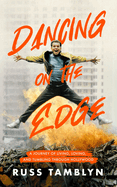
| Publisher: | Blackstone | |
| Genre: | Biography & Autobiography, Music, Entertainment & Performing Arts, Artists, Architects, Photographers, Memoirs | |
| ISBN: | 9798212273312 | |
| Pub Date: | April 2024 | |
| Price: | $28.99 |
| Biography & Memoir |
by Russ Tamblyn, Sarah Tomlinson
Before he was actor and writer Amber Tamblyn's dad, Russ Tamblyn was just like her: a child actor turned in-demand movie star. His endearing memoir, the joyful-rueful Dancing on the Edge: A Journey of Living, Loving, and Tumbling Through Hollywood, tells of how he went from Oscar nominee to actor who couldn't get a guest spot on The Love Boat. The most interesting part: it wasn't Hollywood that turned its back on him.
Born in 1934 and raised in Inglewood, Calif., by former vaudevillian parents, Tamblyn got a contract with MGM at 16. His career as a dancing, acrobatic actor culminated in his defining film role: Riff in 1961's West Side Story. But by the time his MGM contract ended in 1963, Tamblyn had lost his enthusiasm for acting. He stopped chasing movie roles, ditched his Pacific Palisades pile, and moved to free-spirited Topanga Canyon to make visual art. "[T]hat emptiness I had experienced for so many years had been filled up with a profound creative urge," he explains. Unfortunately, before long there was a new emptiness in Tamblyn's life: empty pockets. Readers should find themselves invested equally in Tamblyn's quests for meaning and financial solvency.
Dancing on the Edge is a valuable account of both Old Hollywood and the West Coast beat scene. Tamblyn doesn't come right out and say that he wishes he hadn't "dropped out of Hollywood," but the latter half of his book is infused with a low-grade melancholy suggesting something rare in a Tinseltown memoir: ingenuousness. --Nell Beram, author and freelance writer
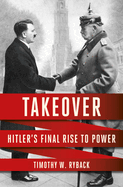
| Publisher: | Knopf | |
| Genre: | Europe, Wars & Conflicts, 20th Century - Holocaust, History, World War II - General, Germany, Modern | |
| ISBN: | 9780593537428 | |
| Pub Date: | March 2024 | |
| Price: | $32 |
| History |
by Timothy W. Ryback
In the riveting Takeover: Hitler's Final Rise to Power, historian Timothy W. Ryback (Hitler's Private Library: The Books That Shaped His Life) examines the fraught, six-month roller-coaster of political haggling and backroom deals that brought Adolf Hitler to power. Germany's Weimar Republic was on its last legs in the summer of 1932 as Paul von Hindenburg, the 84-year-old Reich president and World War I general, struggled to prevent a "fracturing of the polity" between the violent extremes of Communists on the left and National Socialists on the right. The latter were led by the man whom Hindenburg dismissively called "the Bohemian corporal."
Supported by a wealth of archival material, Ryback chronicles how Hitler's vow "to destroy democracy through democratic process" came to fruition by January 1933--but not before he endured months of dizzying changes in fortune that nearly destroyed the Nazi movement. At times, Hitler's handling of political setbacks revealed him "to be more waffler than Führer," Ryback argues. Hindenburg, the lone sympathetic figure in Ryback's narrative, faced "a full-blown case of 'constitutional paralysis' " and required a chancellor "with the personality and capacity to break" it.
That history is not as inevitable as most might believe forms an unsettling undertone throughout the book. Ryback's brief chapter on the day of Hitler's accession to the chancellorship reads as a near comedy of errors when a last-minute disagreement breaks out between Hitler and his compatriots on their way to the reception hall. Takeover is startlingly relevant history, well-wrought and splendidly researched, that reveals how democracies can die democratically. --Peggy Kurkowski, book reviewer and copywriter in Denver, Colo.
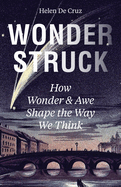
| Publisher: | Princeton University Press | |
| Genre: | Social, Cognitive Science, Epistemology, Movements, Psychology, Natural History, Science, Anthropology, Social Science, Emotions, Humanism, Philosophy & Social Aspects, Religious, Cognitive Psychology & Cognition, Cultural & Social, Philosophy | |
| ISBN: | 9780691232126 | |
| Pub Date: | March 2024 | |
| Price: | $27.95 |
| Philosophy |
by Helen De Cruz
Helen De Cruz, a philosophy professor who holds the Danforth Chair in the Humanities at Saint Louis University, expands Plato's famous statement in Theaetetus that "philosophy starts nowhere else but with wonder" in Wonderstruck: How Wonder and Awe Shape the Way We Think. She locates the experiences of wonder and awe at the crux of the vast array of human endeavors, including science, art, religion, magic, and more, which she terms "cognitive technologies." These activities stem from a sense of curiosity and a desire to question, explore, and make sense of the world. The author refers to these as "self-transcendent" emotions: they take people out of themselves, underscoring their participation in and deepening their connection with the world.
De Cruz's intellectually ambitious work also delves into the psychological underpinnings of this transcendence, offering insight into humanity's openness to new ideas, its sense of hope during times of uncertainty, and its resilience during hardship. She traces the ways that humans have understood the experience of wonder through history. In her marvelous, multifaceted discussion, Wonderstruck assures readers that the world is teeming with possibilities and mystery, if only they're able to take the time to look. "Wonder requires attention, and a lot of that is captured by others, such as social media companies, for their own ends," De Cruz writes. By reclaiming access to wonder and awe, readers will not only enrich their own lives but also tap into resources for confronting both personal and global challenges. --Elizabeth DeNoma, executive editor, DeNoma Literary Services, Seattle, Wash.

| Publisher: | Princeton University Press | |
| Genre: | Philosophy & Social Aspects, Exercise, Science, Social History, Health & Fitness, Anthropology, General, Medical, Cultural & Social, History, Disease & Health Issues, Social Science | |
| ISBN: | 9780691235493 | |
| Pub Date: | April 2024 | |
| Price: | $29.95 |
| Science |
by Beth Linker
With an entertaining narrative focus on the individuals responsible for a decades-long "poor posture epidemic" that began in the early 20th century, Slouch: Posture Panic in Modern America by Beth Linker revisits a largely forgotten period in U.S. history when the "social contagion" of poor posture was treated with the same seriousness as deadly communicable diseases.
A cultural historian as well as a historian of medicine and disability, Linker charts the complex arc of the epidemic, and how it attracted a wide array of professionals in medicine and education, and "health culturists" such as Joseph Pilates, who advised clients to improve their deportment by placing a book on their heads, and by sitting cross-legged like "those people of the East." The "Harvard slouch" report and studies by military and public health agencies showed that slouching was rampant in America, prompting panic that the country's future leaders would end up chronically ill or permanently disabled. Orthopedist Joel E. Goldthwait contended that slouching predisposed a person "to tuberculosis, nervous disease, acute mental disorder... and many intestinal disorders."
Scattered throughout Slouch are the fruits of Linker's deep archival research, including reproduced public health advertisements intimating that standing straight not only reduced the likelihood of disease, it also signified health, youthful vitality, upright character, and sexual chasteness. Looking ahead, Linker (War's Waste: Rehabilitation in World War I America) connects the poor posture panic to present-day "noninfectious epidemics" such as the 21st-century preoccupation with obesity, ADHD, and diabetes.
Slouch is a skillfully researched, engrossing account of a socially engineered epidemic that captured the public imagination for the better part of a century. --Shahina Piyarali
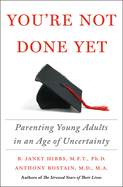
| Publisher: | St. Martin's Press | |
| Genre: | Family & Relationships, Parenting, Life Stages, Developmental, Psychology, Adolescent, General, Later Years | |
| ISBN: | 9781250283238 | |
| Pub Date: | March 2024 | |
| Price: | $29 |
| Parenting & Family |
by B. Janet Hibbs, Anthony Rostain
It's more common than ever for emerging adults to struggle with finding their feet in the unprecedented challenges of the 2020s--and for their parents to feel a mixture of anxiety and frustration.
You're Not Done Yet: Parenting Young Adults in an Age of Uncertainty is an indispensable guide for parents navigating the complexities of supporting their children who have just entered adulthood as they cope with an array of mental-health issues and a demanding set of economic pressures and social factors that earlier generations didn't have to contend with. The first step requires a reset that parents embrace young adults' "developmental progression... that is not mired in the past."
Getting to a place where parents and children listen to each other necessitates a change in both mindset and communication that authors B. Janet Hibbs and Anthony Rostain, experts in psychiatry and family therapy and co-authors of The Stressed Years of Their Lives, lay out in terms that are specific and compassionate. Their book provides practical strategies and insightful scripts for parents seeking to strike a balance between offering support and fostering their children's autonomy without falling into communication pitfalls caused by their own anxieties. The authors draw on real-life examples from their practices, offering hard-won wisdom and reassurance to families in the midst of similar journeys.
Hibbs and Rostain present a road map for those parenting young adults in today's ever-changing world. This book provides a beacon of hope for families facing the challenges of this transformative stage of life. --Elizabeth DeNoma, executive editor, DeNoma Literary Services, Seattle, Wash.

| Publisher: | WorthyKids/Hachette | |
| Genre: | Emotions & Feelings, Art, Asia, Social Themes, Clothing & Dress, Juvenile Fiction, Places | |
| ISBN: | 9781546005339 | |
| Pub Date: | April 2024 | |
| Price: | $18.99 |
| Starred | Children's & Young Adult |
by Sanae Ishida
Author, artist, and designer Sanae Ishida melds her literary talents (Little Kunoichi) with her sewing prowess (Sewing Love) to create the exquisitely empowering picture book Sashiko's Stitches.
Sashiko is overwhelmed by "so many feelings" that sometimes all she can do is cry. Her mother embraces the girl, then reminds her about the origins of her name. Sashiko goes back "many, many hundreds of years" to when families of hardworking Japanese fishermen mended their damaged clothing using "tiny little stitches." Repeated repairs resembled beautiful patterns, so the menders began purposefully creating distinct designs, calling the stitches "sashiko," meaning "little pierces." Sashiko's mother teaches her "One stitch. Two stitches. Three stitches," until Sashiko is sewing every day: "She stitches her small and big fears, and they start to feel less scary."
Ishida is a masterful storyteller, symbiotically pairing words and images. She writes of Sashiko's feelings as "big heavy clouds, weighing her down into the ground"; Ishida's inviting, saturated watercolor illustrations ingeniously underscore Sashiko's emotional overload by engulfing her in darkened swirls, her sunken legs trapped by burrowing animals and tangled roots. Ishida adroitly presents Sashiko's gradual, determined emotional mending through her first cautious stitches on small pieces of cloth, to eventually creating a protective, comforting quilt enabled by "the love and care of sashiko." The story is appended with further information about sashiko, including common patterns. "One stitch at a time," Ishida skillfully ushers Sashiko's journey toward calming recovery. --Terry Hong
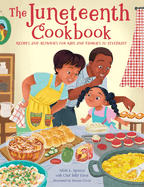
| Publisher: | becker&mayer! kids | |
| Genre: | Cooking & Food, Patriotic Holidays, Holidays & Celebrations, African American & Black, Juvenile Nonfiction | |
| ISBN: | 9780760385791 | |
| Pub Date: | April 2024 | |
| Price: | $19.99 |
| Starred | Children's & Young Adult |
by Alliah L. Agostini, illust. by Sawyer Cloud
Black U.S. history is dynamically showcased through food, drink, crafts, games, and music playlists in The Juneteenth Cookbook, author Alliah L. Agostini and illustrator Sawyer Cloud's thematic sequel to their picture book The Juneteenth Story. Co-author and recipe developer chef Taffy Elrod brings 20 years of experience in the food industry to this celebratory and accessible cookbook for children.
Each section--Drinks, Appetizers, Mains, Sides, and Desserts--features three or four recipes based on "historically relevant foods" as well as an activity that encourages kids to find ways to celebrate. Agostini and Elrod include recipes that "are linked to Juneteenth and broader African American and Black culinary and cultural traditions" and provide "some often overlooked but fascinating context" for many of the items. Children are encouraged to honor (and taste!) the significance of emancipation through traditional flavors found in their recipes for items like Freedom Fizz, Mac 'N' Please, and Sweet Potato Pie Bars (many of which can be made with allergen-friendly ingredients). Each recipe is intended to be budget-friendly and easy for home chefs of all ages--a big positive for any kid itching to try cooking solo.
Illustrator Sawyer Cloud uses an abundance of hues to focus young readers' attention on her vivacious art which features soft lines that portray an array of inclusive skin tones, hairstyles, and facial features. Her illustrations of the food are painterly, reminiscent of Maira Kalman's work. Agostini and Elrod's text mixed with Cloud's illustrations make for a cookbook that encourages intergenerational celebration, storytelling, and fellowship. --Rachel Werner, author and teaching artist at Hugo House, Lighthouse Writers Workshop and The Loft Literary Center.

| Publisher: | Roaring Brook Press | |
| Genre: | New Baby, Animals, Dogs, Family, Social Themes, New Experience, Juvenile Fiction | |
| ISBN: | 9781250884763 | |
| Pub Date: | April 2024 | |
| Price: | $18.99 |
| Starred | Children's & Young Adult |
by Elisha Cooper
How is Emma, a dog, full of "wonders"? By literally being full of puppies! In the blindsidingly moving Emma Full of Wonders, Elisha Cooper (Train; 8: An Animal Alphabet) offers a picture-book tour through a dog's experience of pregnancy and puppy birth, although the fact that Emma is expecting may come as a big, beautiful surprise to readers.
An omniscient narrator introduces Emma, "a large dog/ with many small dreams." These "dreams" take the form of a clutch of fantasy puppies who float above Emma's head in apparitional gray tones. The narrator goes on to describe Emma's dreams for these doggies: "singing, dancing, rolling in the grass," and more. The narrator proceeds to chronicle Emma's everyday activities--naps, stretches, walks--until "the day" arrives. The story concludes with her newborn pups gamboling about--sure enough, there's "singing, dancing, rolling in the grass"--and the assurance that Emma's "dreams came true."
While Emma Full of Wonders doesn't mention its protagonist's pregnancy, Cooper speckles the story with hints. "Some days Emma woke from her naps and still felt tired," the narrator says at one point. Why is she so tired? And why is it, exactly, that Emma "looked forward to tomorrow"? And wait: Is her belly getting bigger? Toward the end of the book, which features understated ink-and-watercolor art throughout, the narrator relays that Emma's "whole body felt strange," after which all becomes clear in a series of wordless spreads that show her delivering and tending to her newborns. Cooper captures the miracle in illustrations so tastefully straightforward that, as he recognizes, words are unnecessary. --Nell Beram, freelance writer and YA author
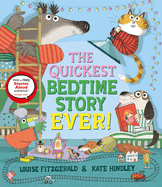
| Publisher: | Nosy Crow | |
| Genre: | Cats, Animals, Foxes, Dogs, Bedtime & Dreams, Interactive Adventures, Juvenile Fiction, Ducks, Geese, etc. | |
| ISBN: | 9798887770512 | |
| Pub Date: | April 2024 | |
| Price: | $17.99 |
| Children's & Young Adult |
by Louise Fitzgerald, illust. by Kate Hindley
Blame Louise Fitzgerald and Kate Hindley when your kiddos can't go to sleep, because their giggle-inducing, highly interactive picture book, The Quickest Bedtime Story Ever!, is so funny that one read-through as part of a bedtime routine may not suffice.
Five animals dry off after a bubble bath and don pajamas. Readers are quickly reassured, with an abundance of exclamation marks, that "an amazing story you'll love, share, and never forget" follows and--even better!--"it's only ten words!" Of course it isn't that simple, but with the anticipation comes joy. The animals, after earnest promises, "a very serious voice warm-up" (that's not at all serious), warnings to readers to supervise their grown-up, and various ridiculous bedtime preparations, are finally treated to their 10-word tale. While it doesn't prove the expedient story readers were initially promised, sleep still comes... for most of the animals, at least.
Debut author Fitzgerald's theatrical training shows in this fourth wall-breaking text that feels like the warm-up for an improvisational performance. Page turns bring constant delights, and absurdities include physical movement, affirmations, and verbal antics. Illustrator Hindley (The Littlest Yak) depicts the adorable, wide-eyed menagerie vigorously accomplishing typical bedtime preparations with comically varying degrees of readiness. Subtle illustrative details, including a theft of bedding and one critter who sleeps through most of the action, invite quieter and repeat engagement. For daunted caregivers, a QR code provides a free audio recording of the book.
This satirical and delightfully interactive story will likely bring joy to the bedtime routine, even if it makes bedtime a bit later. --Kit Ballenger, youth librarian, Help Your Shelf
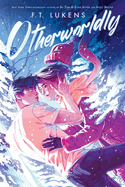
| Publisher: | Margaret K. McElderry Books | |
| Genre: | Paranormal, Occult & Supernatural, Romance, Young Adult Fiction, Action & Adventure, LGBTQ+ | |
| ISBN: | 9781665916257 | |
| Pub Date: | April 2024 | |
| Price: | $19.99 |
| Children's & Young Adult |
by F.T. Lukens
Otherworldly by F.T. Lukens (Spell Bound) is a paranormal romance bursting with coziness, featuring a heartwarming found family and a charming love story.
An inexplicable perpetual winter has plagued Solis City for five years, prompting 17-year-old Ellery to find a job to help support their family's struggling farm. Despite their parents' faith in the goddess of the harvest, Ellery thinks the "supernatural bullshit" is a waste of time. Meanwhile, Knox, a magic "familiar" from the "Other World," helps humans who have made bargains with his queen, the very same goddess of the harvest. However, Knox hasn't heard from her in years and decides to escape the lonely Other World by not returning after his latest assignment. The problem? Knox is unable to stay in the earthly realm without a human tether. Ellery, desperate to end winter to help their family, strikes a deal with the familiar--a deal that leads to love.
This cuddly paranormal romance has strong worldbuilding and well-explored real-world themes, such as religious trauma and strained parental relationships. But the novel's most captivating aspects are its humorous banter and the theme of found family, as depicted through the endearing romance that develops between Knox and Ellery, and the family Ellery builds separate from their parents. These slice-of-life events, told from both Ellery's and Knox's perspectives, are well-balanced with more tense fantastical moments, and it's during these low-stakes scenes that Lukens creates some of the comfiest moments. A heartwarming and enchanting read. --Lana Barnes, freelance reviewer and proofreader